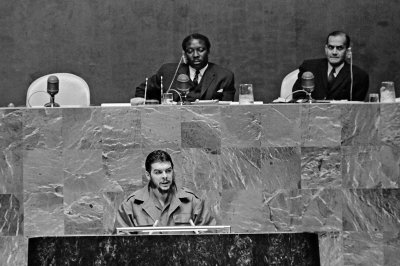Topic: Fiorello LaGuardia
Fiorello Henry LaGuardia (pronounced /fiəˈrɛloʊ ləˈɡwɑrdiə/; born Fiorello Enrico La Guardia; December 11, 1882 – September 20, 1947; he himself wrote his name as a single word with no space between the first "a" and the capitalized "G" which follows) was Mayor of New York for three terms from 1934 to 1945 as a liberal Republican. Previously he was elected to Congress in 1916 and 1918, and again from 1922 through 1930. Irascible, energetic and charismatic, he craved publicity and is acclaimed as one of the three or four greatest mayors in American history. Only five feet tall, he was called "the Little Flower" (Fiorello is Italian for "little flower").
LaGuardia, a nominal Republican who appealed across party lines, was very popular in New York during the 1930s. As a New Dealer, he supported President Franklin D. Roosevelt, a Democrat, and in turn Roosevelt heavily funded the city and cut off patronage from LaGuardia's foes. La Guardia revitalized New York City and restored public faith in City Hall. He unified the transit system; directed the building of low-cost public housing, public playgrounds, and parks; constructed airports; reorganized the police force; defeated the powerful Tammany Hall political machine; and reestablished merit employment in place of patronage jobs.
LaGuardia was a domineering leader who verged on authoritarianism but whose reform politics were carefully tailored to reflect and exploit the sensibilities of his kaleidoscopic constituency. He defeated a corrupt Democratic machine, presided during a depression and a world war, made the city the model for New Deal welfare and public works programs, and championed immigrants and ethnic minorities. He succeeded with the support of a sympathetic president. He secured his place in history as a tough-minded reform mayor who helped clean out corruption, bring in gifted experts, and fix upon the city a broad sense of responsibility for its own citizens. His administration engaged new groups that had been kept out of the political system, gave New York its modern infrastructure, and raised expectations of new levels of urban possibility. He synthesized the human sympathy of Tammany ward heelers with the honesty and efficiency of the good government reformers.
It uses material from the Wikipedia article "Fiorello LaGuardia."





